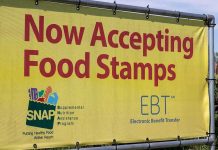
America’s welfare system has become a patchwork of competing priorities where some states offer families $549 monthly while others provide barely enough for a week’s groceries, creating a lottery system that determines survival based on your zip code.
Story Overview
- Government assistance programs vary dramatically by state, creating unequal access to basic needs
- Emergency pandemic measures revealed both the power and limitations of federal intervention
- TANF benefits range wildly across states while federal programs like SNAP maintain consistency
- Recent policy debates center on work requirements versus unconditional support for families
The Great State Lottery of Survival
The median TANF benefit reached $549 monthly in 2024, but this figure masks a troubling reality. A family’s access to government assistance depends more on geography than genuine need. States control significant portions of welfare distribution, creating a system where identical families receive vastly different support levels based solely on state boundaries. This fragmentation undermines the fundamental principle that basic human needs shouldn’t vary by political jurisdiction.
Federal programs like SNAP and WIC provide more consistent coverage, yet even these face state-level variations in implementation and outreach. The result creates confusion for families navigating multiple systems with different rules, eligibility requirements, and benefit structures. Working families often discover they earn too much for one program but too little for meaningful self-sufficiency.
Pandemic Lessons in Government Capability
The COVID-19 crisis exposed both the potential and pitfalls of expanded government assistance. Direct stimulus payments and enhanced unemployment benefits reached millions quickly, demonstrating that bureaucratic obstacles often stem from design choices rather than inherent limitations. Emergency rental assistance programs prevented widespread evictions, while temporary Child Tax Credit expansions provided immediate poverty relief for families.
These emergency measures sparked intense debate about permanent expansion. Advocates point to measurable improvements in child poverty rates and family stability during the enhanced benefit periods. Critics worry about work disincentives and fiscal sustainability, though evidence suggests direct payments often enable rather than discourage employment by providing stability for job searches and child care arrangements.
The Work Requirement Paradox
TANF’s emphasis on work requirements reveals fundamental contradictions in American welfare philosophy. States design programs that theoretically promote employment while often failing to address barriers that prevent sustainable work. Child care costs, transportation challenges, and inflexible low-wage scheduling make compliance difficult for the very families these programs claim to help.
Meanwhile, programs without strict work requirements like SNAP demonstrate greater effectiveness in reducing food insecurity and improving long-term outcomes. The evidence suggests that meeting basic needs first creates conditions for economic advancement, contradicting assumptions that hardship motivates self-improvement. Families with reliable food and housing access show better employment retention and educational outcomes for children.
Housing Crisis Meets Bureaucratic Reality
Housing assistance programs illustrate the gap between policy intentions and practical outcomes. Section 8 vouchers and public housing serve essential functions but reach only a fraction of eligible families. Waiting lists stretch for years while rental costs outpace benefit increases, creating a system that helps some while leaving many others in precarious situations.
The Emergency Rental Assistance program during the pandemic demonstrated alternative approaches, providing direct payments to landlords and streamlined application processes. This model reduced administrative burdens while achieving faster results, suggesting that program design matters as much as funding levels. Traditional public housing approaches may require fundamental restructuring to address current market conditions and family needs.
Sources:
Childcare.gov – Financial Assistance for Families
Experian – Government Programs for Low-Income Families
Treasury – Assistance for American Families and Workers













